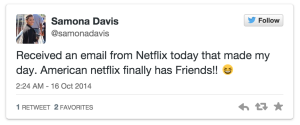— March 4, 2019

markusspiske / Pixabay
Blogging is a necessary element of any successful marketing strategy. Every blog post leaves its own digital footprint of your brand—that means you want every single piece of content to be a top-quality representation of your organization. With that comes the simple fact that quality content takes time, which can be especially hard to offer when you’re a small marketing team with limited resources. And unless you’re working with an outside marketing agency like yours truly, it can be difficult to achieve the volume necessary to make a real impact with your blog content strategy.
If you’re on a small in-house marketing team, you probably felt the weight of the world on your shoulders when you realized how much content you’d need to produce for a successful inbound strategy. Take a deep breath, look around, and tell me what you see. Are you still alone on this daring adventure to produce content? Or are you surrounded by fellow coworkers who can be leveraged to implement your strategy?
Involve Other Coworkers In Your Blog Content Strategy
Regardless of the size of your organization, you should be leveraging as many employees as possible for content creation. Not only is this a powerful way to crowdsource your marketing efforts, but involving employees in content creation is also an excellent way to strengthen your company culture.
First of all, blogging is an incredible opportunity for employees to create their own professional portfolios of content. At the same time, diversifying the voices on your company’s blog is a great way to carry the brand message further. If you’ve worked behind the scenes for 10 years at a company and have a lot of insight, blogging is a fantastic opportunity to tap into that knowledge and showcase that perspective.
Simply asking employees to contribute their thoughts and perspectives can serve as an important reminder that they are valued and appreciated. All in all, internal content crowdsourcing can be an excellent way to ease your workload while helping your coworkers gain personal and professional experience, and providing valuable content to your audience.
While that all sounds well and good, as you try to implement a collective blog content strategy, you may face some pushback. Here are some common objections you may hear as you try to sway your coworkers into becoming content creators, along with how you can help overcome their objections.
How to Respond to Common Objections
“I’m not an expert.”
Now practice your response: “Actually, you are.” Non-marketers tend to hear the term “expert” and head for the hills. They think “expert” means PhD background, 25 years of head-down, devoted research to a given topic. When marketers say “expert”, we’re thinking about internal subject matter experts (SMEs.)
You may not have written your dissertation on the ins and outs of banking or teaching or nutrition, but how long have you worked in that space? How many customer questions, concerns, and objections have you observed and handled over time? This is the most valuable experience marketers can look for. Look for people who have spent time observing customer needs and let them know how valuable their perspective is to share. (Think: your customer success team and your executives.)
“I’m not a writer.”
Not everyone is a writer, so if you hear this objection, it warrants the follow-up question: “If you’re not a writer, then what are you?” Are you graphically inclined? Are you a strong speaker who is willing to be on a video or podcast?
Remember that blogging doesn’t have to be all writing—the best content comes from playing to your strengths. Let’s say you have a team member who is an excellent conversationalist, but struggles with writing. Host a Q&A session with the individual, then transcribe the conversation and turn that into a post. If that individual did an excellent presentation recently, you may be able to extract material for a podcast or video. Those with artistic minds may be interested in drawing out their thoughts into an infographic or series of illustrations.
“I don’t have time.”
One helpful way to combat this objection is to think about different engagement levels—meaning you can offer a variety of content contribution levels so it is more accessible to be a blogger. If someone is completely new to blogging, you will likely need to spend more time coaching them through the process. For an initial post, consider doing an interview and transcribing it into a post. When the author sees their thoughts come to life, they may feel better about their ability to contribute and open up more to providing additional content. Next time, you can have them write a rough draft, and then you can provide meaningful feedback and work through the process alongside them.
Sometimes, too, people have a hard time wrapping their brains around the idea of clearing a whole afternoon to write a blog post. If this is the case, how can you help the writer organize their time in a way that is more amenable to their work schedule? Can you spread deadlines over a couple of weeks? Consider having a collective brainstorming session in week one, having the outline due in week two, a rough draft in week three, and a revised version due in week four.
Conclusion
Content creation can be tricky to navigate if the company culture doesn’t prioritize marketing. No matter how hard a marketing team tries to crowdsource, you really need the support from the top to provide individuals the time and space they need to create content. Whether it is written into job statements or is an ongoing topic of conversation, it is worth considering the idea of requiring each employee to contribute a set amount of content on a regular basis.
It will take some careful coaching and guidance, but once you get other employees involved and feeling good about the content they contribute, momentum will build and the content cycle will become self-perpetuating. When employees feel they have a voice and sense of purpose, they are much more driven to give their all to the organization, and this will continue to move your brand forward.
Digital & Social Articles on Business 2 Community
(71)








